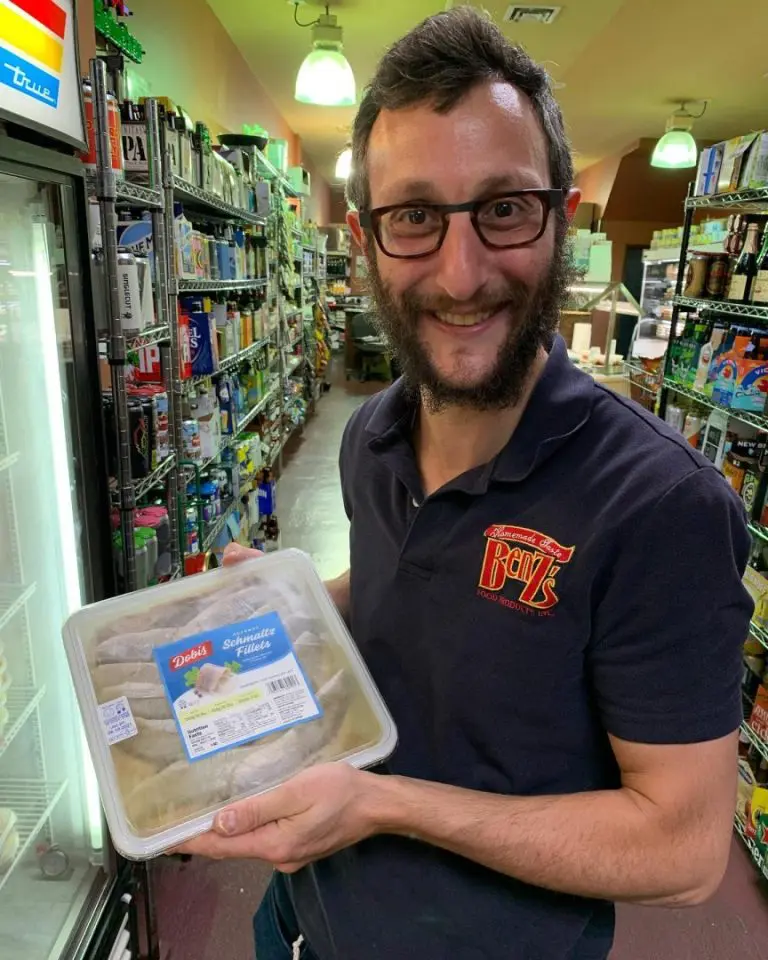Shattering the myth of the mom-and-pop bakery, a profitable bakery is more science than art for bakery owners. Specific tweaks to your business plan can turn your cozy bakery into a rising success story. The ‘profitable bakery’ isn’t just piped frosting, it requires a strong business strategy.
In this high-gluten world, how might your bakery out-knead the competition?
Know this, just having a passion for pastry doesn’t guarantee bakery profits! However, injecting your business plan with intelligence – that’s the secret ingredient to baking success. Now, let’s boost your bakery’s dough with this ultimate guide for bakery owners. Roll up your sleeves and let’s get into the mix.

Metrobi drivers are rated 4.97 out of 5
Trusted by local businesses for:
- Background-checked professionals
- Specialized in business deliveries
- Same drivers for consistency
- 4.97/5 average delivery rating
How to Create a Profitable Bakery Business Plan
Step 1: Understanding Your Bakery’s Current Financial Status and Average Bakery Revenue
Assessing your bakery’s financial health crucially shapes your upcoming decisions and strategies. An insightful understanding of your financial situation enables you to achieve the profitability you desire. To attain this, performing a thorough financial analysis is warranted. This article delves into the critical components of developing a successful plan for your bakery business, emphasizing the importance of financial analysis and other strategic considerations.
A comprehensive financial analysis goes beyond just taking a look at the bank balance. It involves dipping into your bakery profit and loss account, the balance sheet, and the cash flow statement. They provide insights into the bakery’s revenues, operational expenses, capital investment, loans, and profitability. It gives a detailed picture of the financial health of your bakery, and any possible financial risks can be promptly mitigated. Crafting a detailed bakery business plan, integrating thorough financial analysis, is crucial for forecasting profitability and ensuring long-term resilience and growth in the competitive bakery industry.
This analysis assists in total expenses and identifying areas whereby by making slight alterations in operations, cost-saving can be achieved. By determining the costs associated with specific products, a better pricing policy can be developed. Overhead costs and their impact on profits are well recognized, leading to its effective management.
Step 2: Identify Areas of Improvement: bakery profit margin
Success lies in spotting and leveraging opportunities for improvement. An essential part of drafting a profitable bakery business plan involves identifying areas that need improvement. Such, improvements may save costs, increase efficiency, or boost sales – all leading to greater profitability in your average profit margin.
Common areas for potential improvement in a bakery’s profit margin might include efficient resource utilization, reducing wastage, optimizing operations for speed and cost, improving supplier relationships to negotiate better prices, or elevating product quality to attract higher-paying customers.
But how do we identify these areas in our bakery business? It might include directly observing operations, analyzing performance data, speaking to staff, and even seeking customer feedback. Make a note of any recurring issues or bottlenecks that hinder workflow or cause employee frustration. This could point to a system or process that needs improvement.
Bakery's Profit Margin: Kneading the Numbers 🍞💰
Profit margins for bakeries usually fall between 5% and 15%, with smaller specialized bakeries potentially achieving higher margins. The typical profit margin for a bakery can vary significantly, ranging from single digits to 20%, reflecting the diversity in profitability within the bakery sector.
Step 3: Develop Profitable Strategies as bakery owners
Having underscored the importance of understanding your current situation and identifying opportunities, the natural progression is developing strategies that bolster your bakery’s profitability.
Profitable strategies could range from investing in technology for efficiency, redesigning the menu for higher-margin items, introducing, loyalty programs to boost customer retention, or offering catering services for events and corporate orders.
Creating a profitable bakery business plan is not just a one-time project but an ongoing process. Your strategies need to be flexible to accommodate market dynamics and changing business environments. By implementing these steps effectively, the recipe for a profitable bakery is ready to cook. Transform your visions of owning a successful bakery into a reality with our templates for bakery business plans, guiding you through each step to ensure your bakery flourishes.
The profitability and continued success of your bakery hinge on a thorough understanding of your current financial status, the ability to identify areas for improvement, and the capability to develop and execute profitable strategies.
In essence, better planning leads to better management, and better management leads to a more profitable bakery.

Metrobi is transforming bakery deliveries
Specialized solutions for bakery businesses:
- Bakery-trained drivers
- Proper handling equipment
- Peak day delivery support
- 23% average cost reduction
Enhancing Your Bakery’s Profitability with Effective Marketing Techniques
Importance of Marketing in a Bakery Business
Marketing, while sometimes underestimated in traditional industries like bakeries, holds the remarkable potential to inflate profitability with their baked goods. This principle is particularly crucial in bakery businesses, where competition is high and differentiation is often down to creative selling propositions.
Think of marketing as your bakery’s megaphone. It projects your brand, your offerings, and your unique selling points to your target audience. Strong marketing tactics carve out your distinct place in the customer’s mind, which can translate to higher sales and, ultimately, increased profitability.
Marketing Strategy Effects on Bakery Sales 🍰📈
When sales and marketing teams work together, research concludes they generate 32% higher revenue, retain 36% more customers, and achieve a 38% higher win rate in closing deals, underscoring the significant impact of a unified marketing strategy on bakery sales.
A statistical study revealed that bakeries implementing robust marketing campaigns registered a 30% increase in their sales within a few months.
Examples of successfarketing techniques for bakeries range from the seemingly simple but potent word-of-mouth advertising to leveraging digital platforms like social media and websites. Here’s how some heavyweight bakeries tuned their rhythm to the beat of smart marketing:
1. A bakery initiated a “Bake of the Day” promotion on their social media platforms, offering discounts on featured baked goods. This strategy showed a tremendous increase in their social media followers, translating to higher footfalls and an average revenue too.
2. Another bakery introduced a “Loyalty Card” scheme. Regular customers earned points with each purchase, redeemable against future orders such as freshly baked bread. This strategy bolstered their customer retention rate while indirectly augmenting sales.
Implementing Effective Marketing Techniques
Implementing effective marketing techniques in a bakery business requires a clear recognition of your bakery’s strengths, an understanding of your target audience, and the ability to measure your methods’ effectiveness. Let’s walk through a step-by-step guide to incorporating powerful marketing maneuvers into your bakery business.
Firstly, KNOW YOUR BAKERY. What sets you apart from your competitors? Whether it’s stellar customer service, unique products, or artful craftsmanship – identify and capitalize on your bakery owner’s strongest suit.
Identify Your Target Audience
Next, IDENTIFY YOUR TARGET AUDIENCE. Is it locals seeking quick treats? An online audience within a broader radius? Special dietary label-seekers like vegans or gluten-intolerant customers? Understanding your audience helps carve a niche and persuasive marketing messages.
Lastly, MEASURE YOUR SUCCESS. Are your chosen techniques driving the desired results? Adjust and recalibrate your strategies based on observed performance. Use tools like Google Analytics for your website or point-of-sale systems in-store to track customer behavior and gauge advertising effectiveness.
Remember, profitable marketing comes from a deep understanding of your bakery’s offerings and knowing how to promote these effectively to your target audience. A successful mix of the right promotional strategies can be a game-changer for your bakery business, paving the path toward heightened sales and unprecedented profitability.
Average Bakery Revenue: A Piece of the Pie 🍰💰
The average revenue for bakeries in the United States ranges between $325,000 and $450,000 annually. Factors such as the size, location, product mix, and marketing strategy can influence this figure. Bakery owners typically earn between $77,000 and $121,000 per year, showcasing the potential profitability of the bakery business.
Increasing Operational Efficiency for a More Profitable Bakery
Operational efficiency, in its simplest form, measures how well a bakery can turn its resources like labor and equipment into revenue. It’s the correlation between cost and benefits. When your bakery keeps operational expenses low while maintaining high-quality products and services, profitability escalates.
For instance, a bakery may boost its operational efficiency by investing in premium pricing equipment. Such equipment decreases labor costs and produces a consistent output, which lowers the risk of waste due to unsellable goods increasing net profit margin.
Furthermore, it is worth conducting regular operational audits. This means reviewing the usage and maintenance of equipment, scheduling, and performance of staff, and the adequacy of ingredient stocking.
Global and U.S. Bakery Market Overview 🌎🍞
The global bakery products market was valued at $331.37 billion in 2020 and is projected to reach $436.91 billion by 2026, highlighting significant growth in the bakery sector worldwide.
Strategies for Increasing Operational Efficiency
Real growth ripples from thoughtful strategies. Let’s lay out some methods to drive operational efficiency in your bakery.
1. Streamline Baking Process
Seemingly small changes, like reorganizing your bakery’s layout or scheduling tasks efficiently could make a noticeable difference to your bakery’s daily operations.
Utilize Technology
From Sales CRM systems, inventory management, and scheduling software to POS systems – technology has revolutionized how bakeries operate technologies can drastically reduce labor costs, increase productivity, and reduce wastage – contributing to a more profitable bottom line.
2. Train your Staff
A well-trained team produces less waste, is better positioned to make sales, and creates a better customer experience – which pays dividends in repeat business.
Regular Staff Training
Make sure your staff understand baking processes, customer service standards, and the products themselves. Regular training keeps the team in peak condition and encourages employees to take ownership of their roles.
Employees in the Baking Industry 🍞👩🍳
In 2022, there were approximately 205,000 bakers in the United States, reflecting the significant workforce dedicated to the baking industry.
3. Efficient Inventory Management
Play guard against loss with efficient inventory control. Keep track of what’s in stock and use automated systems to place orders when stock is low. This practice can reduce wasted ingredients and prevent revenue loss from missed sales opportunities.
These strategies have the potential to dramatically increase operational efficiency. Put them into practice gradually and monitor the impact on your average bakery*’s profitability.
Achieving operational efficiency requires pace and a willing team. It’s about following proven strategies while always remaining eager for innovation. It’s as much an attitude as it is a strategic roadmap.
Stock Management: Efficiency and Savings 📦💼
Companies can achieve a 25% increase in productivity, a 20% gain in space usage, and a 30% improvement in stock use efficiency by using integrated order processing for their inventory system. Reducing stock-outs and overstocks can lower inventory costs by 10%, showcasing the significant financial benefits of effective stock management.
What is a Bakery Business Plan and Why is it Important?
Just as a blueprint serves as guidance for constructing a building, so does a business plan for establishing and growing a bakery. This meticulously written document provides a comprehensive overview of your bakery’s future, outlining your aspirations and the strategic steps to realize them. So, what does it entail?
The Components of a Bakery Business Plan
Firstly, it maps the direction of your bakery, encapsulating your vision, mission, and objectives. It functions as your bakery’s compass, steering all your decision-making processes. This includes everything from choosing your bakery’s location to its product offerings and pricing strategy. Explore our comprehensive guide on Bakery Business Planning to master the art of crafting a plan that propels your bakery to success.
A bakery business plan also delves into the bakery’s target market, marketing, and sales strategy. It pinpoints your ideal customers and how you’ll attract and retain them. Explore our comprehensive guide on creating a bakery business plan to master the art of crafting a strategy for a thriving and prosperous bakery venture.
Finally, it includes your bakery’s operational plan and financial projections. This illustrates how your bakery will run daily—your suppliers, your staff, and your production process. Simultaneously, it maps out your bakery’s monetary objectives—revenue generation, cost reduction, and your bakery profit margin maximization strategies. This article delves into the crucial components of creating a successful plan for your bakery business, including everything from financial estimates to operational strategies.
Importance of a Bakery Business Plan
A well-conceived bakery business plan is akin to having a trusted compass during a challenging hike. It doesn’t merely outline the path to profitability—it ensures that you stay the course when challenges arise. But how exactly does it make your bakery more profitable?
Driving Bakery Profitability with a Robust Business Plan
For starters, it provides critical insights into market dynamics, aiding in carving a unique selling proposition that sets your bakery apart from competitors. Knowing your target market’s preferences can assist in optimizing product offerings, boosting sales, and promoting customer loyalty.
Furthermore, your business plan outlines your financial projections and operational strategies. This clarity ensures efficient resource allocation, mitigating wastage, and driving cost efficiencies. For instance, if you have the projected season and for a certain pastry during the holiday seasons, you could plan your inventory and staffing accordingly to maximize profits during these periods.
In conclusion, a bakery business plan serves as a roadmap to guide every aspect of your bakery operations, enabling you to anticipate challenges, seize opportunities, and ultimately steer your bakery toward profitability. It may seem intimidating, but the effort invested in creating a thorough bakery business plan will reap multiple benefits in the long run.
Sales Volume in the Bakery Industry 📈🍞
The bakery industry is forecasted to grow to over $46 billion in the next five years, driven by consumer demand for healthier ingredients and premium products like whole-grain, all-natural, or gluten-free options.
Common Challenges in Making a Bakery Profitable and How to Overcome Them
Identifying Common Challenges
The confectionery and baking industry is no dessert walk. Like many business landscapes, it presents its unique set of challenges. Among these hurdles lie unpredictable ingredient costs. Fluctuating prices of commodities like flour, sugar, or dairy can impact your profitability. Leverage these templates for bakery business plans to navigate the sweet yet complex world of baking, ensuring your venture stands firm against the uncertainties of fluctuating ingredient costs.
For instance, if there’s a sudden surge in the cost of flour, your production costs are bound to shoot up. This constraint could dent your overall average bakery profit margin and profits, a predicament that many bakehouse entrepreneurs often grapple with.
Another commonplace impediment is the stiff competition in the bakery industry. From large-scale operators to local patisseries, the bakery market is saturated, making it challenging to carve a unique identity and attract customers.
Then, there’s the constant demand for innovative offerings. Customers have a developed palate. They are always on the lookout for fresh, unique, and high-quality products, which makes staying relevant and profitable in the bakery business a pain point crack.
Strategies for Overcoming Challenges
When challenges exist, so do solutions. Overcoming obstacles and growing your own bakery sales and business profitability is a matter of precise analysis, the right strategy, and suitable execution.
Firstly, dealing with fluctuating commodity prices requires smart buying and flow-price entry management. Bulk buying during low-price seasons could prove to be beneficial in managing overhead costs. Regularly monitoring market trends and maintaining optimal inventory can go a long way in keeping your production costs under control.
Amidst a competitive market, it’s crucial to differentiate your bakery. Rather than going toe-to-toe with large-scale bakeries, find your niche. This could be unique products, exceptional service, a distinctive branding strategy, or a combination of these factors. A niche market with targeted marketing efforts can pave the way for improved customer loyalty and profitability.
Lastly, creativity is king in the bakery industry. Regularly updating your bakery’s menu, experimenting with flavors, and staying in touch- Considerng trends are essential.
Implementing Profit Strategies
Turning these strategies into action steps begins with diligent research and planning.
To deal with commodity price fluctuations:
- Regularly monitor market prices.
- Bulk purchase ingredients during off-peak seasons.
- Implement an efficient inventory system.
To stand out from the competition:
- Identify your unique concept, products, or services.
- Develop a strong branding strategy, consistent with your niche.
- Execute targeted marketing campaigns that appeal to your designated market.
To foster creativity:
- Regularly update your menu based on customer feedback and industry trends.
- Experiment with different flavors or baking techniques.
- Partner with local food influencers or bloggers, promoting unique products.
Executing these steps systematically will lay out a blueprint ready to serve your bakery’s success.
Average Scale of the Bakery Industry 🍞📊
The bakery industry in the United States represents 2.1% of the GDP. The industry includes 6,000 retail bakeries and nearly 3,000 commercial bakeries, highlighting its substantial scale and impact on the economy.
Wrapping Up the Dough: Final Thoughts on Transforming Your Bakery Business Plan
A fresh business plan can boost your bakery’s profitability incredibly. This is achieved by creating a unique value proposition, being customer-focused, involving key stakeholders, integrating technology and digital marketing strategies, and tracking your progress regularly.
The new strategies you embrace could change your bakery’s fortunes overnight. Seeing increased profit margins and a growing customer base isn’t a dream when you adopt this revitalized business plan.
Ready to give your old business plan the upgrade it deserves? Remember everything rides on properly understanding your clientele and consistently providing excellent services. All are integrated into your new and improved business plan.
What specific, newly thought-out value proposition are you considering for your bakery? Blend your unique value with the customer’s desires, and you have a recipe for success that’s sweeter than any cinnamon roll.
Now, rise to the occasion! Let’s get that oven hotter than before. Bake your way to success and never look back. After all, the secret to your bakery’s profitable future isn’t in the dough, it’s in the plan.




























